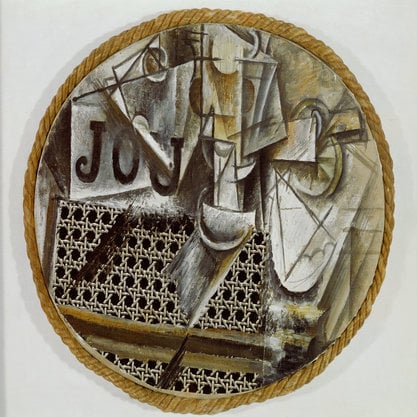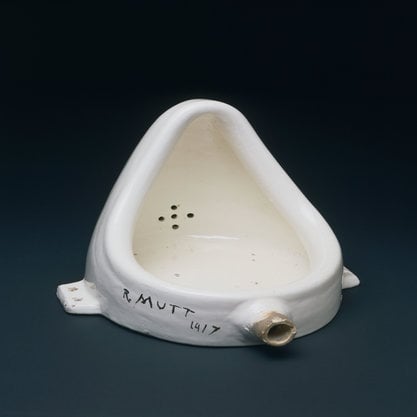Overview
Visual Arts Subject Overview By Donkin, Hazel
Overview
Modernism in the visual arts is a complex term and currently the subject of much academic debate. However, this project demanded that we set boundaries and so decisions were made about the scope of entries. These decisions were primarily based on two concerns: the limitation placed on the number of visual arts entries by the publisher and our desire to include a global selection of modernisms. We sought entries dating from the mid-eighteenth century onwards when art took a new path in Europe as a result of the Enlightenment and the Industrial Revolution, although these dynamic cultural changes were anchored in developments relating to concepts of freedom and individualism in the fifteenth and sixteenth centuries. The ambitions and aesthetics of the new art, based in urban centres—initially Paris—were inspired by social conditions, contemporary visual culture, and utopian ideals and involved looking forwards and constant change, but also a dialogue with the past as well as with other cultures. We recognize that modernism happened under different conditions and at different times internationally and can therefore be understood as a series of different ideas about what being modern in visual art means. No chronological end point was set because modernism remains the concern of artists today. The idea of “postmodernism” is also contested, of course, and although it signifies changes in art practice it may, in the long term, “turn out to be another current in the always churning waters of modernism … thinking of itself as the start of what comes next.”
Conventionally, modernism is understood as a line of development from one style to another, a trajectory towards an ultimate goal. Steve Edwards and Paul Wood outline this succinctly in their book Art and Visual Culture 1850–2010: Modernity to Globalisation. They summarize the two major art history narratives of modernism: the “formalist’ or “internalist” approach that understands art as “autonomous” or self-sustaining and self-referring, and the approach that sees modern art as embedded in and responding to the experiences and visual culture of modernity. The formalist approach is associated with the ideas of Roger Fry, Clive Bell, Alfred H. Barr, and Clement Greenberg. Greenberg’s history of modern art was particularly influential and dominant until the emergence of “the new art history” in the 1970s and 1980s. The new art history expanded the definition of art and the field of analysis and has been defined as a “capacious and convenient title that sums up the impact of feminist, Marxist, structuralist, psychoanalytic, and socio-political ideas on a discipline notorious for its conservative taste in art and its orthodoxy in research.” Elements of both of these approaches are evident in the visual arts entries in the Encyclopedia. One problem with conventional accounts of modernism is that they miss out a lot of art: they are focused on a small number of locations, primarily centers in Europe and North America; they neglect work that is not “avant-garde” but is nevertheless a response to modernity; they focus on the modernist “masters,’ so we hear about the “mountains” while the “foothills” are neglected, and the work of women artists is particularly obscured. Recently, more attention has been paid to those missing from the dominant narrative, although the impact of the new art history is now questioned and problematized too.
Entries relating to women artists are fewer than I had hoped. Arguably this supports the charge that art history is still centered around (white) men. Grisela Pollock has argued this and expressed concern that despite decades of efforts by art historians, only a slight shift is evident. Hopefully the range of entries will expand in future editions when scholars offer to contribute, thereby dealing with the imbalance. The international reach of entries is impressive. Our perception of art and the path of art history is colored by our own cultural experiences. A global overview is not really possible and what we hoped to achieve was to gather experiences of modernism and seek acceptance of them as legitimate. The entries reveal a dialogue across cultures: differences and similarities are evident and shared connections apparent. This aspect of the visual arts section is remarkable.
The global reach of entries is a result of the tireless efforts of the sub-editors who took up this challenge for little reward, in the knowledge that their contribution would be a catalyst for the expansion of our understanding of modernism and a call to those able to fill in some of the many gaps. The exercise has already facilitated dialogue and fostered relationships among scholars world-wide. At present the entries merely represent snapshots of modern art made in a variety of places and times. The compilation of the visual arts section of the Routledge Encyclopedia of Modernism was a formidable task and the product is limited in many respects. We therefore look forwards to the second edition as this will develop our first visual arts offering and hopefully include many entries that are currently missing.
Further Reading
Smith, B. ( 1998 ) Modernism’s History, New Haven, CT: Yale University Press.
Storr, R. ( 2002 ) Modern Art Despite Modernism, New York: MOMA.
Edwards, S. and Wood, P. ( 2012 ) Art and Visual Culture 1850–2010: Modernity to Globalisation, London: Tate Publishing/The Open University.
Rees, A.L. and Borzello, F. (eds) ( 1986 ) The New Art History, London: Camden Press.
Jõekalda, K. ( 2012 ) 'What has Become of the New Art History?', a review of the conference entitled After the New Art History, organized by the Journal of Art Historiography and held at the Barber Art Gallery, University of Birmingham, March 26 and 27, 2012. https://arthistoriography.files.wordpress.com/2013/12/jc3b5ekalda.pdf.
Belting, H. ( 2003 ) Art History after Modernism, Chicago, IL: University of Chicago Press.

.jpg)


